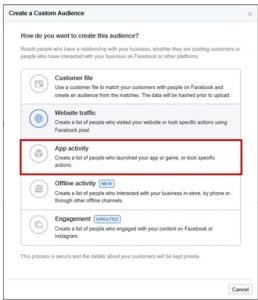
In our previous blog, Maximise Sales with Omni-channel Retailing, we explained the differences between Omni-channel and Multi-channel selling. This follow up will focus our attention on:
- Why you should adopt an Omni-channel approach.
- How to promote your Omni-channel strategy.
- How to overcome issues with evaluating information.
- Factors which highlight successful Omni-channel strategies.
What is Omni-Channel Selling?
Omni-channel selling is the evolution of multi-channel selling, but with a focus on a more seamless approach to the consumer and business buyer experience. This includes sales across all available shopping channels, i.e. eCommerce website, smartphone devices, brick-and-mortar stores, trade counters, television, direct mail, and catalogues.
Why you should adopt an Omni-Channel approach
In this digital age, competition within the retail trade is at its all-time high, it is important retailers can capture customers across multiple sales and marketing channels. A recent report by Deloitte illustrates “over 95% of online retail sales, in the UK, are additional to high street sales.” This report shows the importance of having an Omni-channel presence to drive sales as shoppers can easily hop from channel to channel delivering significant opportunity to these sellers. Deloitte estimates that up to £6bn in sales may have been enabled by Omni-channel retail, further emphasising the substantial opportunities this integrated strategy can offer your business.
How do I promote an Omni-Channel Strategy?
Having a presence wherever your potential clients are will provide you with a competitive advantage; especially if your competitors have yet to adopt the integration of an Omni-channel approach. A recent report questioned retailers about how they are promoting their Omni-channel capabilities to their consumers and results highlighted the following channels were proving successful:
- Company Website
- Focussed Email Content
- In-store Signage
- Social Media
- Traditional Advertising
- Digital Signage
- Location Specific Advertising
However, the success is in merging these elements together. It does take a lot of joined up thinking and integration across all of your sales, marketing and promotional channels but results show that effort really does pay off and can have a positive impact on sales, loyalty, and basket size.
The Common Problem – How do I evaluate my Omni-channel Strategy?
The complaint, we are able to collate the data but do not know what to do with it next, is expressed by many retail executives. The reality of interpreting data collated from numerous arenas including sales, customer management, orders, finances, and marketing can be difficult to make sense of, especially when collected in multiple forms and locations. How could businesses use Omni-channel information to their advantage?
- Deliver innovative customer experiences: Rapidly and easily create unique, personalised web and in-store experiences that differentiate your brand allowing you to exceed customer expectations.
- Gain and leverage from customer insights: Get a 360° customer view, leverage this data and benefit from improved customer loyalty, improved B2B and B2C relationships, and grow lifetime value.
- Manage orders intelligently: Easily manage orders from multiple channels – POS, web, call centre, kiosks – all in one place. This will easily allow you to process orders faster, satisfy more customers and reduce overall operational expenses.
- Exceed potential for growth & expansion: Easily create and manage multiple websites for individual brands, locations and business models – all from a single instance.
The ability to evaluate data collected from multiple areas of your Omni-channel strategy lies at the heart of powerful software which will enable you to easily decipher information across multiple channels of your organisation. Software from big names such as NetSuite and Qlik offer excellent business intelligence tools allowing you to interpret data from a dashboard, resulting in quicker, more informed decision making and the ability to act quickly to both customer and market demands.
Well-known brands such as Yankee Candle, TK Maxx, and Boohoo are using NetSuite SuiteCommerce as a means of managing their Omni-channel strategy and evaluating data across their online and offline sales channels.
How to measure success of an Omni-Channel Strategy?
Combining your business goals with an information solution such as NetSuite will allow you to easily measure the success of your Omni-channel strategy and be agile to respond quickly to change. The following are common elements businesses regularly measure to demonstrate the success of an Omni-channel retailing strategy:
- Improved loyalty
- Increased brand interactions
- Increased basket size
- Improved customer services
- Supply chain efficiency
- Customer retention
- Marketing effectiveness
Continue to follow our blogs as we look more into the benefits, challenges and business systems for supporting a successful Omni-channel strategy.
(245)
Report Post






